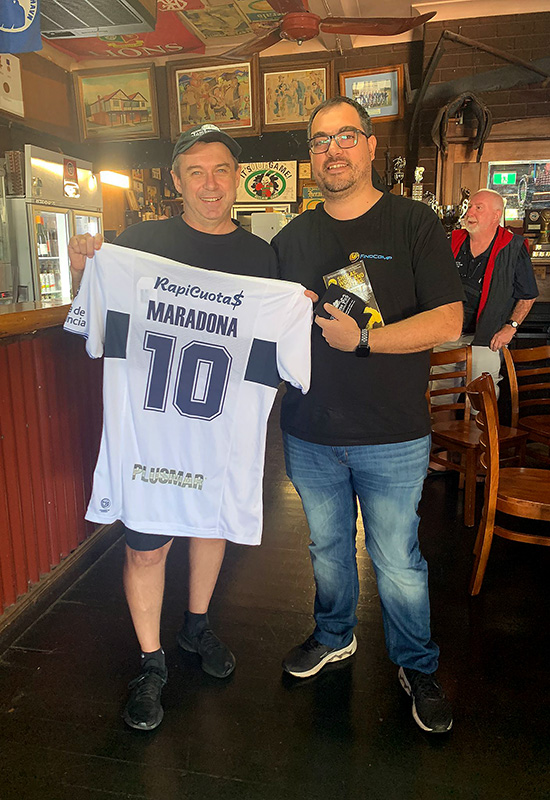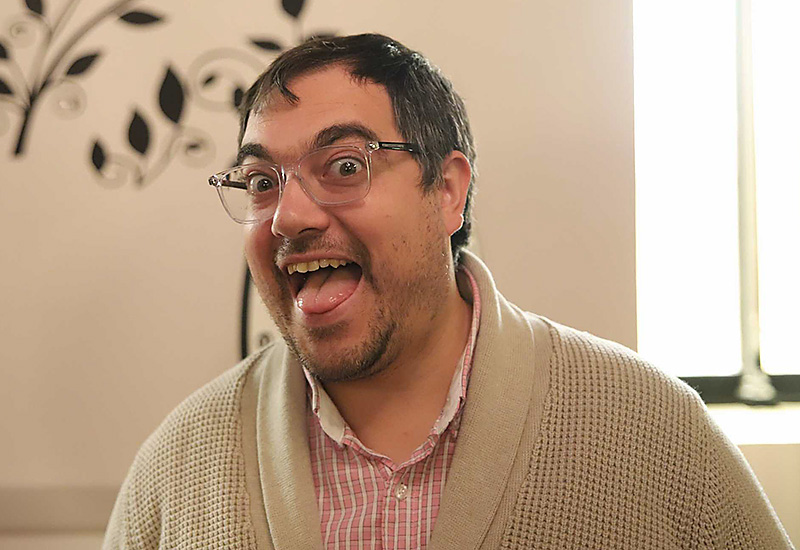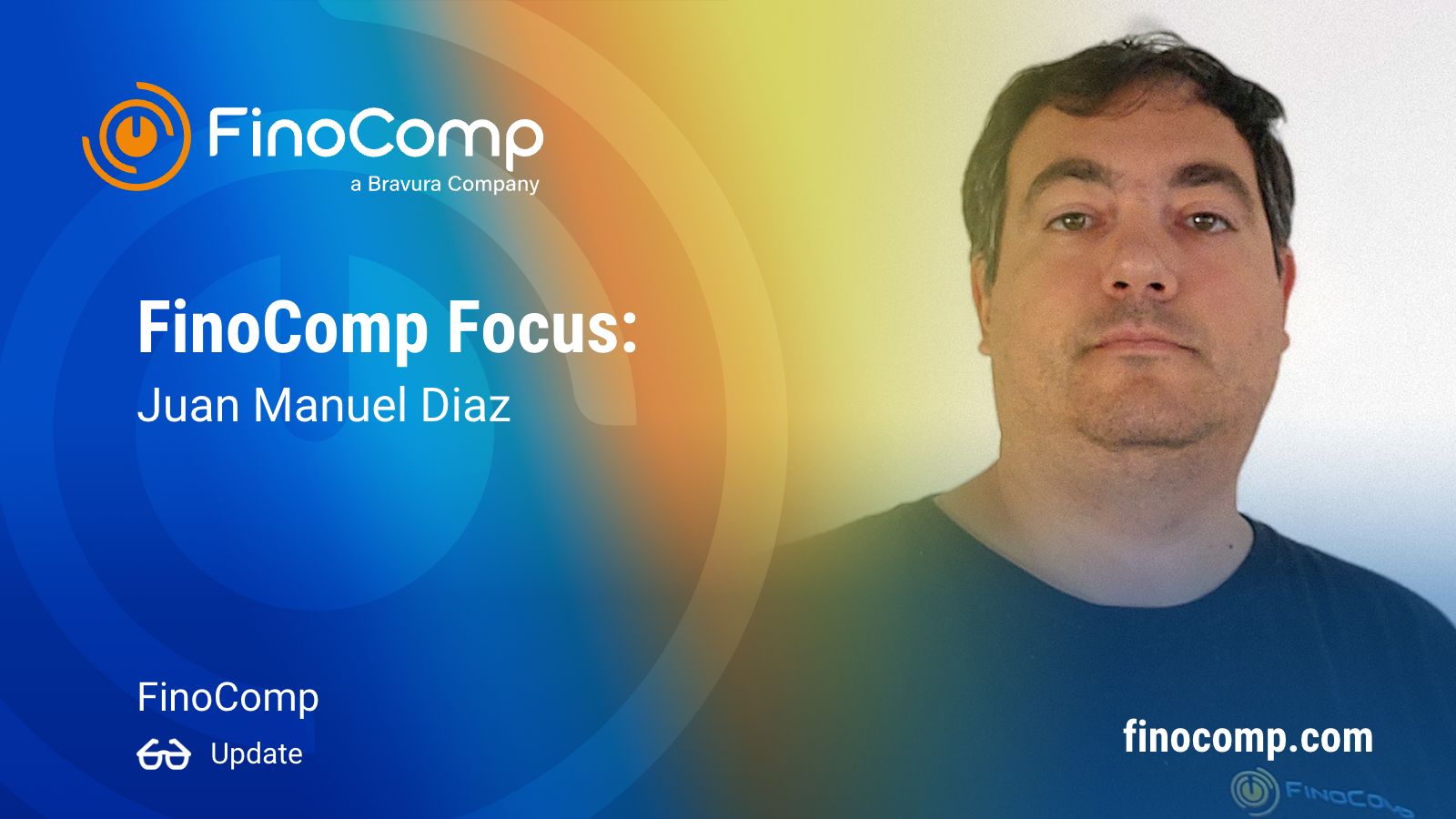
Juan Manuel Diaz
FinoComp software engineer Juan Manuel Diaz explains how he loved computers from an early age, why he believes happy workers are more productive, and how he felt when Argentina won the World Cup.
Tell us about yourself and what made you decide to join FinoComp?
I’ve been in this industry since I was 15 years old, when I started doing computer repairs, before taking a computer science degree at 18. My first job was working for the government of the province of Buenos Aires. Later I moved to Patagonia and did some teaching before realising that I preferred more practical work related to user interfaces. My wife and I decided to pursue opportunities outside Argentina and move overseas. I liked the idea of being part of the financial services sector, which led me to FinoComp. One thing that really made me love the company was that everyone I saw on the corporate videos were really enjoying the working environment!
What do you enjoy about the culture of FinoComp now that you’ve experienced it from the inside?
Something that is always present here is the kindness of everyone, they are willing to support you, especially me because I have very broken English! Everyone has the patience to explain things one, two or three times, whatever it needs to get the thing done. That’s really important. The other thing I love about this place is the awareness about security, it is a main focus here and that makes us to test and re-test everything in order to be sure we are always in the safe zone. We always work with security in mind. I’m working with people who have top-notch skills and I’m learning a lot from them. The quality of our engineers is really impressive.
I believe that a company’s culture is the sum of the contribution of each and every one of us. Culture is like a living thing that is always evolving and people should care about it. Every week, I send a ‘Happy Friday’ message to encourage my colleagues to smile and catch up with each other. I may include a funny meme or a video in the message. I firmly believe that happy people work more effectively and contribute to creating a healthy work environment and a positive company culture. As such, I am passionate about promoting happiness in my workplace.
What made you want to become a software engineer?
I lost my father when I was five, and my mother and brothers and I moved into my grandparents’ house. My youngest aunt also lived there and she was studying computer science which was something relatively new then in 1993. So one day a computer appeared in the living room of my grandparents’ house; I can describe that appliance as a writing machine attached to a TV and with something called Intel 486 inside, and I was really curious about it. When my aunt went out I would turn it on and start doing stuff. From then on, I would say there was no day in my life in which I have not spent at least a couple of hours in front of a computer, so when I had to choose what I wanted to do after high school, there was only one choice, and it was computer science.
What projects are you working on at the moment and what successes have you had?
My main contribution here is related to user interfaces, the first project I was involved in was Asset Pricing. At the moment I’m working on the Model Portfolio Services, on the user interface and user experience side of the application. It’s important to always keep in mind what users expect from our applications. As software engineers, we often focus on problem-solving that is not visual and can lose sight of how users will interact with our system. Since it’s well-known that humans consume with their eyes, we should strive to offer our users something that is predictable, easy to use, accessible, and visually appealing. My main focus in the company right now is in that area.
How do you spend your time outside of work?

“I used to be a private pilot… I am a big football fan”
I used to be a private pilot and the president of my local air club, which was located in El Bolson, Patagonia, Argentina. Unfortunately, I cannot fly here in Australia as I need to revalidate my licence. I am a big football fan (yes, the one with the rounded ball), and I often spend quality time playing it with my kids. I am also a devoted fan of Gimnasia y Esgrima de La Plata, and I brought my team jersey with me, which is now on display at the Johnny Warren Museum in Jamberoo.
What was your favourite moment of the World Cup?
When Montiel scored the last goal in the penalty kick round and we finally became champions after waiting 36 years, I couldn’t hold back my tears and started crying like a kid. My wife was also crying, and we hugged each other in celebration. It was 7am, and our kids looked at us in confusion, not fully understanding what had just happened. The emotions were running high, and I felt compelled to commemorate the occasion in a special way. I rushed to the harbour and hung my Argentinian flag in the old lighthouse there. That was my personal way of celebrating such a remarkable event.


